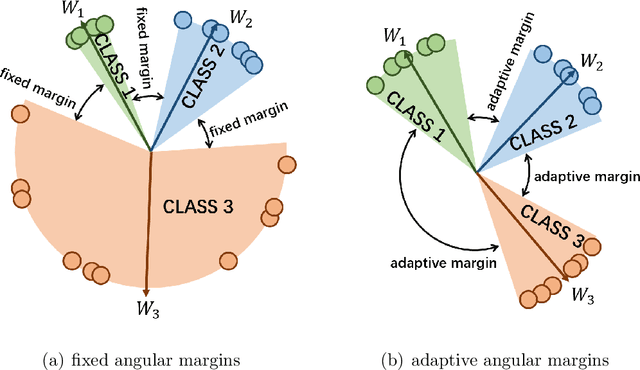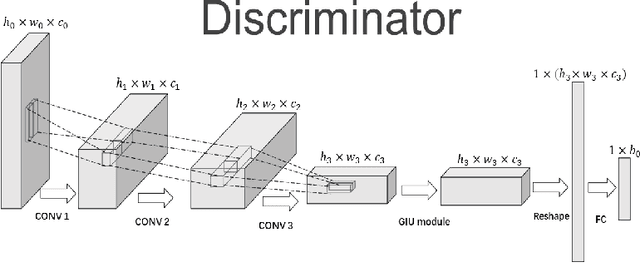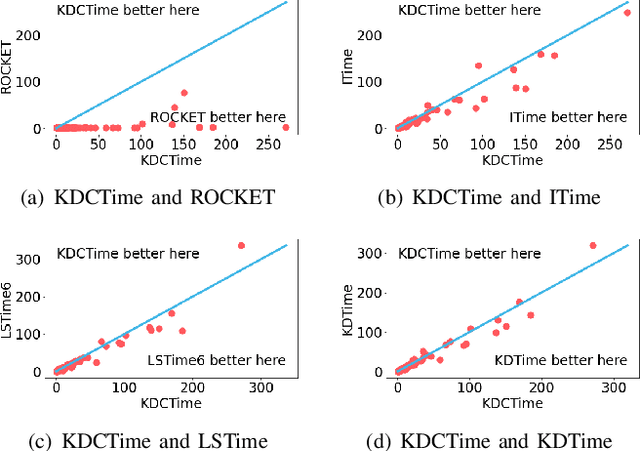Xiaoxiang Liu
MSConv: Multiplicative and Subtractive Convolution for Face Recognition
Mar 08, 2025Abstract:In Neural Networks, there are various methods of feature fusion. Different strategies can significantly affect the effectiveness of feature representation, consequently influencing the ability of model to extract representative and discriminative features. In the field of face recognition, traditional feature fusion methods include feature concatenation and feature addition. Recently, various attention mechanism-based fusion strategies have emerged. However, we found that these methods primarily focus on the important features in the image, referred to as salient features in this paper, while neglecting another equally important set of features for image recognition tasks, which we term differential features. This may cause the model to overlook critical local differences when dealing with complex facial samples. Therefore, in this paper, we propose an efficient convolution module called MSConv (Multiplicative and Subtractive Convolution), designed to balance the learning of model about salient and differential features. Specifically, we employ multi-scale mixed convolution to capture both local and broader contextual information from face images, and then utilize Multiplication Operation (MO) and Subtraction Operation (SO) to extract salient and differential features, respectively. Experimental results demonstrate that by integrating both salient and differential features, MSConv outperforms models that only focus on salient features.
MHLR: Moving Haar Learning Rate Scheduler for Large-scale Face Recognition Training with One GPU
Apr 17, 2024



Abstract:Face recognition (FR) has seen significant advancements due to the utilization of large-scale datasets. Training deep FR models on large-scale datasets with multiple GPUs is now a common practice. In fact, computing power has evolved into a foundational and indispensable resource in the area of deep learning. It is nearly impossible to train a deep FR model without holding adequate hardware resources. Recognizing this challenge, some FR approaches have started exploring ways to reduce the time complexity of the fully-connected layer in FR models. Unlike other approaches, this paper introduces a simple yet highly effective approach, Moving Haar Learning Rate (MHLR) scheduler, for scheduling the learning rate promptly and accurately in the training process. MHLR supports large-scale FR training with only one GPU, which is able to accelerate the model to 1/4 of its original training time without sacrificing more than 1% accuracy. More specifically, MHLR only needs $30$ hours to train the model ResNet100 on the dataset WebFace12M containing more than 12M face images with 0.6M identities. Extensive experiments validate the efficiency and effectiveness of MHLR.
X2-Softmax: Margin Adaptive Loss Function for Face Recognition
Dec 19, 2023



Abstract:Learning the discriminative features of different faces is an important task in face recognition. By extracting face features in neural networks, it becomes easy to measure the similarity of different face images, which makes face recognition possible. To enhance the neural network's face feature separability, incorporating an angular margin during training is common practice. State-of-the-art loss functions CosFace and ArcFace apply fixed margins between weights of classes to enhance the inter-class separation of face features. Since the distribution of samples in the training set is imbalanced, similarities between different identities are unequal. Therefore, using an inappropriately fixed angular margin may lead to the problem that the model is difficult to converge or the face features are not discriminative enough. It is more in line with our intuition that the margins are angular adaptive, which could increase with the angles between classes growing. In this paper, we propose a new angular margin loss named X2-Softmax. X2-Softmax loss has adaptive angular margins, which provide the margin that increases with the angle between different classes growing. The angular adaptive margin ensures model flexibility and effectively improves the effect of face recognition. We have trained the neural network with X2-Softmax loss on the MS1Mv3 dataset and tested it on several evaluation benchmarks to demonstrate the effectiveness and superiority of our loss function.
Energy Storage Price Arbitrage via Opportunity Value Function Prediction
Nov 20, 2022



Abstract:This paper proposes a novel energy storage price arbitrage algorithm combining supervised learning with dynamic programming. The proposed approach uses a neural network to directly predicts the opportunity cost at different energy storage state-of-charge levels, and then input the predicted opportunity cost into a model-based arbitrage control algorithm for optimal decisions. We generate the historical optimal opportunity value function using price data and a dynamic programming algorithm, then use it as the ground truth and historical price as predictors to train the opportunity value function prediction model. Our method achieves 65% to 90% profit compared to perfect foresight in case studies using different energy storage models and price data from New York State, which significantly outperforms existing model-based and learning-based methods. While guaranteeing high profitability, the algorithm is also light-weighted and can be trained and implemented with minimal computational cost. Our results also show that the learned prediction model has excellent transferability. The prediction model trained using price data from one region also provides good arbitrage results when tested over other regions.
GIU-GANs: Global Information Utilization for Generative Adversarial Networks
Jan 25, 2022



Abstract:In recent years, with the rapid development of artificial intelligence, image generation based on deep learning has dramatically advanced. Image generation based on Generative Adversarial Networks (GANs) is a promising study. However, since convolutions are limited by spatial-agnostic and channel-specific, features extracted by traditional GANs based on convolution are constrained. Therefore, GANs are unable to capture any more details per image. On the other hand, straightforwardly stacking of convolutions causes too many parameters and layers in GANs, which will lead to a high risk of overfitting. To overcome the aforementioned limitations, in this paper, we propose a new GANs called Involution Generative Adversarial Networks (GIU-GANs). GIU-GANs leverages a brand new module called the Global Information Utilization (GIU) module, which integrates Squeeze-and-Excitation Networks (SENet) and involution to focus on global information by channel attention mechanism, leading to a higher quality of generated images. Meanwhile, Batch Normalization(BN) inevitably ignores the representation differences among noise sampled by the generator, and thus degrade the generated image quality. Thus we introduce Representative Batch Normalization(RBN) to the GANs architecture for this issue. The CIFAR-10 and CelebA datasets are employed to demonstrate the effectiveness of our proposed model. A large number of experiments prove that our model achieves state-of-the-art competitive performance.
KDCTime: Knowledge Distillation with Calibration on InceptionTime for Time-series Classification
Dec 04, 2021



Abstract:Time-series classification approaches based on deep neural networks are easy to be overfitting on UCR datasets, which is caused by the few-shot problem of those datasets. Therefore, in order to alleviate the overfitting phenomenon for further improving the accuracy, we first propose Label Smoothing for InceptionTime (LSTime), which adopts the information of soft labels compared to just hard labels. Next, instead of manually adjusting soft labels by LSTime, Knowledge Distillation for InceptionTime (KDTime) is proposed in order to automatically generate soft labels by the teacher model. At last, in order to rectify the incorrect predicted soft labels from the teacher model, Knowledge Distillation with Calibration for InceptionTime (KDCTime) is proposed, where it contains two optional calibrating strategies, i.e. KDC by Translating (KDCT) and KDC by Reordering (KDCR). The experimental results show that the accuracy of KDCTime is promising, while its inference time is two orders of magnitude faster than ROCKET with an acceptable training time overhead.
 Add to Chrome
Add to Chrome Add to Firefox
Add to Firefox Add to Edge
Add to Edge